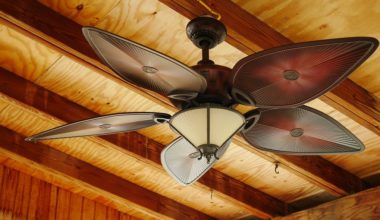Ceiling Fans Are More Than a Cooling Breeze
When ceiling fans were created in the last part of the 1800s their basic role was to give a cooling breeze during times of warm weather. This kept on being their primary capability until the mid-1990s when rivalry from unfamiliar makers constrained American organizations to foster new and inventive ways of promoting their items. The outcome has been the improvement of fans are mechanically cutting-edge as well as their imaginative plans are a resource for the decor of the room where they are installed. Ceiling fans, in contrast to air conditioners, do not cool the air yet rather give a cooling impact by pushing the air descending. This delicate breeze makes dissipation of dampness from the skin and can give a powerful cooling of 6 or 7 degrees. You can save money on electric bill by switching the fan off when you are not in that frame of mind since there is no advantage on the off chance that you are not there.

Throughout the colder time of year warming season ceiling fans likewise assume a part in keeping a uniform temperature all through the room. By switching the heading of pivot cooler air is pulled up from the floor and the warm air is pushed down to supplant it. Ceiling fans can likewise collaborate with air conditioners like those mounted through the wall or in a window. Working the fan so it pushes air down from the ceiling not just gives a cooling impact from vanishing of skin dampness yet it scatters the cool air from the air conditioner all the more equally in the room. There is one circumstance where the fan activity is the inverse from what has been portrayed and this happens when the room has the high ceilings like two stories high or where the fan is situated at the highest point of a stairwell.
With that much separation from the fan to the floor the dissipation impact is nothing. For this situation you would need to push the warm air down during the warming season and pull the cooler air up in the warm weather. There is no rigid rule for picking the size fan for your living space. An unpleasant idea would be a 50 to 56 inch fan for a common main bedroom or parlor where a bigger front room would require 60 inches or more. More modest rooms for instance, a bathroom, office, or kid’s room may just require a 42 to 48 inch fan. The floor region is not the main thought while settling on the fan size. At last your decision will be founded on your very own inclination as much as whatever else. This kind of fan is mounted nearer to the ceiling taking into account some additional room between the sharp edges and the floor. One hindrance is that they really do no move the air as productively as quat tran panasonic however on the off chance that you are willing to make that tradeoff, it very well might be a choice.
